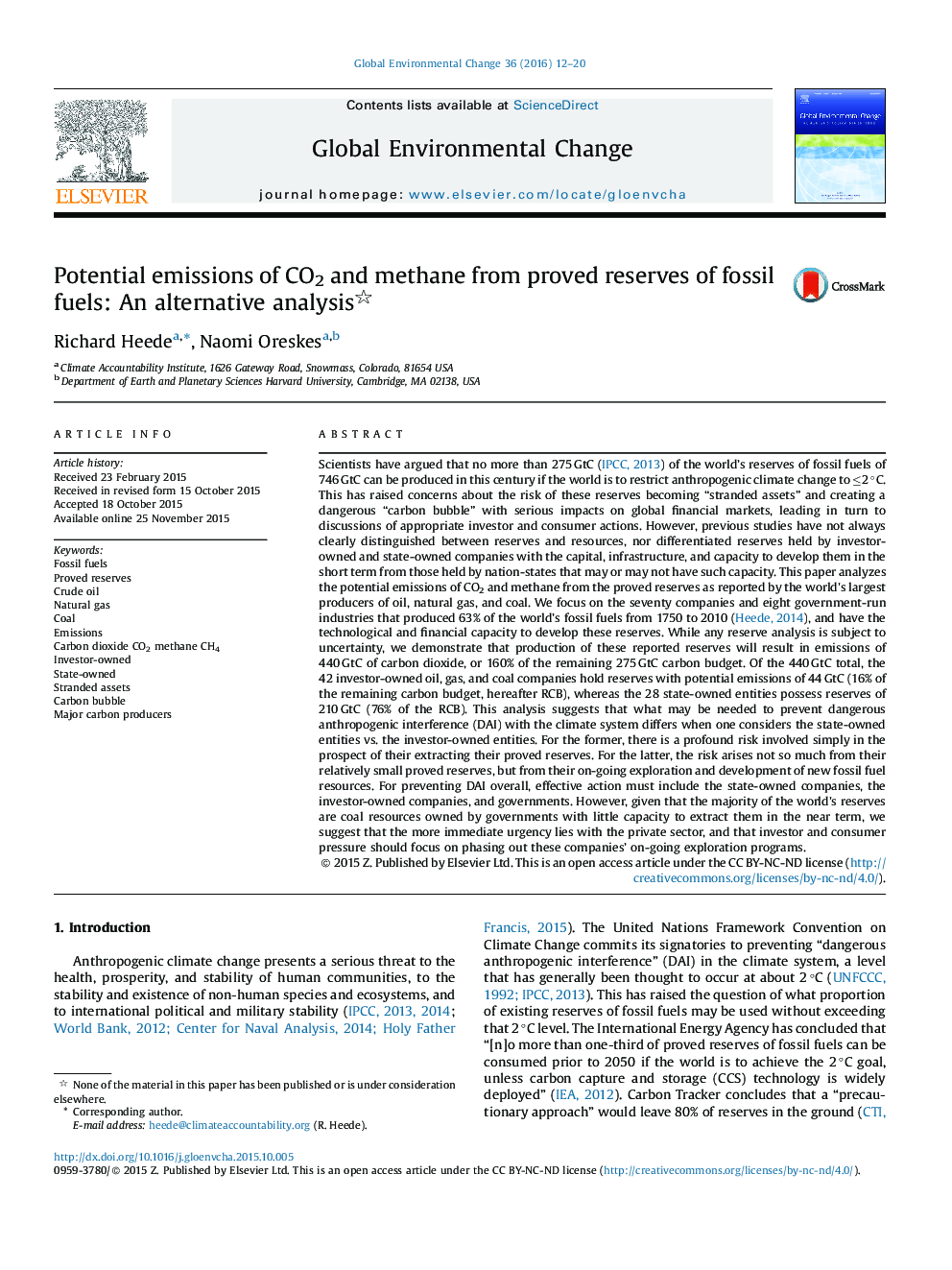| Article ID | Journal | Published Year | Pages | File Type |
|---|---|---|---|---|
| 7469481 | Global Environmental Change | 2016 | 9 Pages |
Abstract
Scientists have argued that no more than 275 GtC (IPCC, 2013) of the world's reserves of fossil fuels of 746 GtC can be produced in this century if the world is to restrict anthropogenic climate change to â¤2 °C. This has raised concerns about the risk of these reserves becoming “stranded assets” and creating a dangerous “carbon bubble” with serious impacts on global financial markets, leading in turn to discussions of appropriate investor and consumer actions. However, previous studies have not always clearly distinguished between reserves and resources, nor differentiated reserves held by investor-owned and state-owned companies with the capital, infrastructure, and capacity to develop them in the short term from those held by nation-states that may or may not have such capacity. This paper analyzes the potential emissions of CO2 and methane from the proved reserves as reported by the world's largest producers of oil, natural gas, and coal. We focus on the seventy companies and eight government-run industries that produced 63% of the world's fossil fuels from 1750 to 2010 (Heede, 2014), and have the technological and financial capacity to develop these reserves. While any reserve analysis is subject to uncertainty, we demonstrate that production of these reported reserves will result in emissions of 440 GtC of carbon dioxide, or 160% of the remaining 275 GtC carbon budget. Of the 440 GtC total, the 42 investor-owned oil, gas, and coal companies hold reserves with potential emissions of 44 GtC (16% of the remaining carbon budget, hereafter RCB), whereas the 28 state-owned entities possess reserves of 210 GtC (76% of the RCB). This analysis suggests that what may be needed to prevent dangerous anthropogenic interference (DAI) with the climate system differs when one considers the state-owned entities vs. the investor-owned entities. For the former, there is a profound risk involved simply in the prospect of their extracting their proved reserves. For the latter, the risk arises not so much from their relatively small proved reserves, but from their on-going exploration and development of new fossil fuel resources. For preventing DAI overall, effective action must include the state-owned companies, the investor-owned companies, and governments. However, given that the majority of the world's reserves are coal resources owned by governments with little capacity to extract them in the near term, we suggest that the more immediate urgency lies with the private sector, and that investor and consumer pressure should focus on phasing out these companies' on-going exploration programs.
Related Topics
Life Sciences
Environmental Science
Environmental Science (General)
Authors
Richard Heede, Naomi Oreskes,
